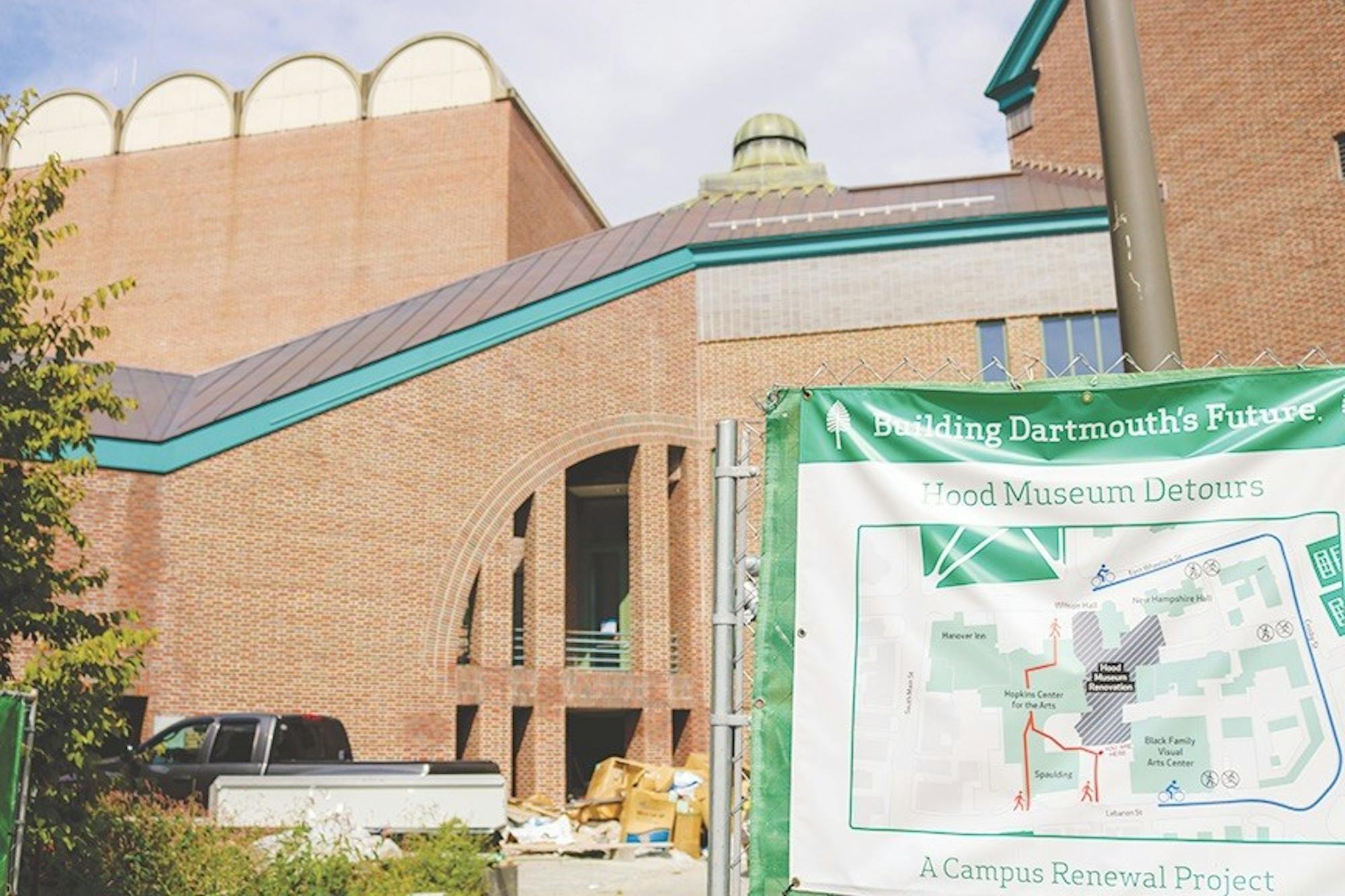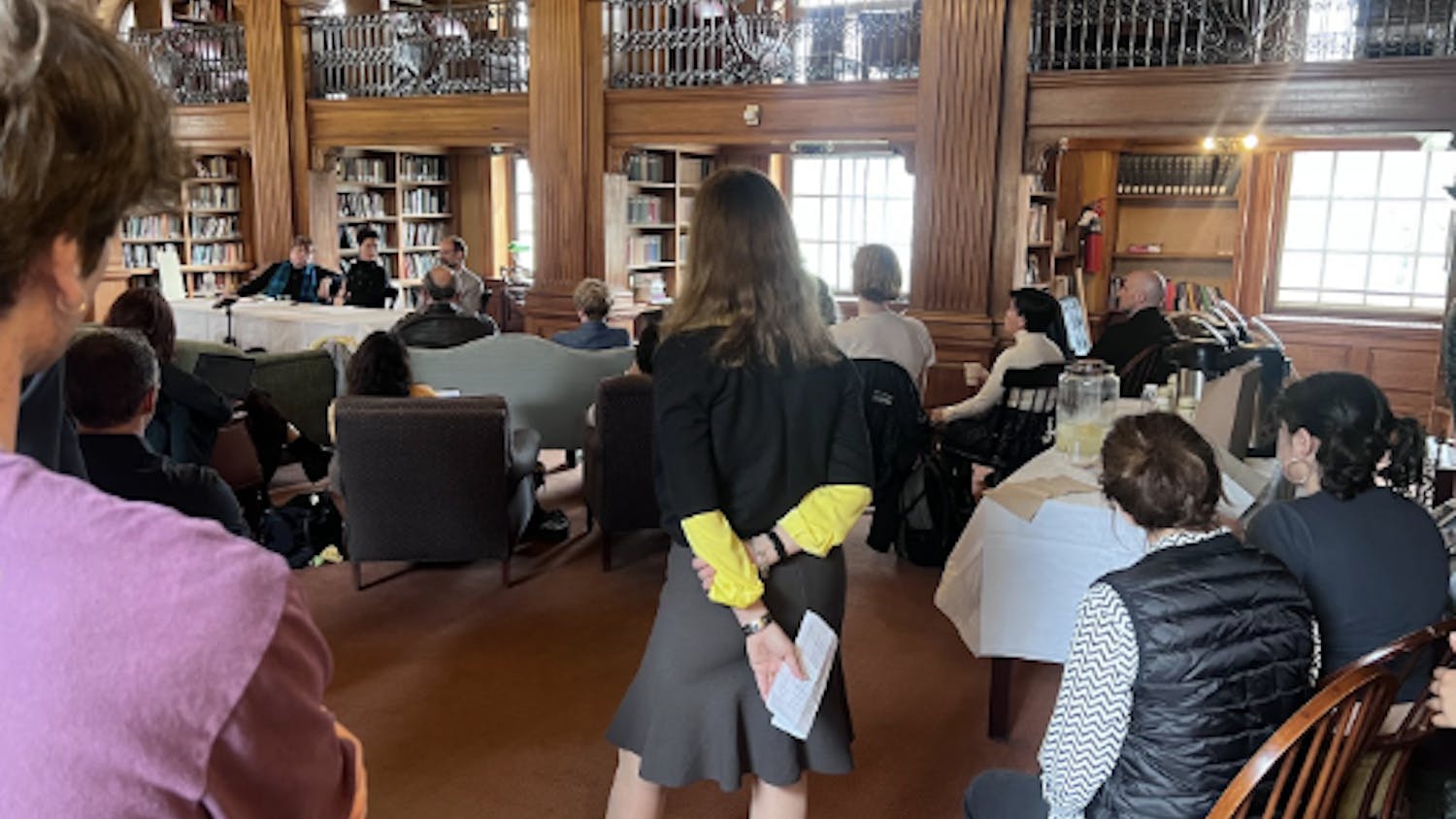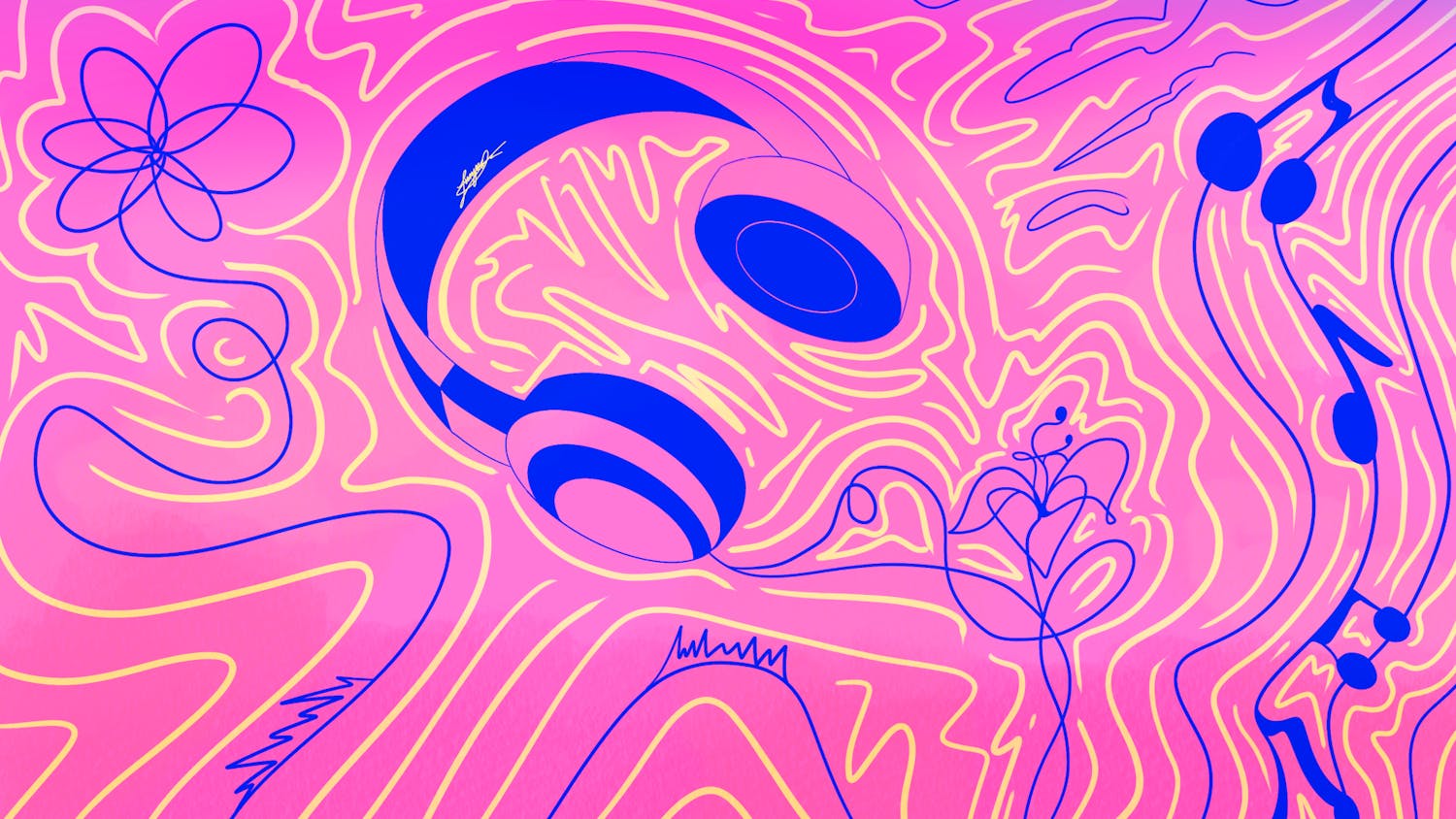The Hood Downtown, the Hood Museum of Art’s temporary exhibition space, closed on Sept.13 after a send-off reception that included talks by John Stomberg, the director of the museum, and a showcase of what is to come with the new museum building.
The Hood Downtown has been an installation on Main Street since the closing of the Hood Museum in 2016. While the smaller space did not display pieces from the museum’s extensive collection, the Hood Downtown played host to a variety of exhibits including French artist Laetitia Soulier’s mathematically-based exhibit, “The Fractal Architectures,” and Chinese artist Sin-Ying Ho’s ceramics exhibition, “Past Forward.” Most recently, before its closing, the Hood Downtown displayed Toyin Ohih Odutola’s exhibition of drawings titled “The Firmament.”
Juliette Bianco ’94, the deputy director of the museum, said, “I’ve been at the museum for 20 years and [they’ve] been talking about how and why [they’d] expand for most of [those years].”
The expansion of the new building will nearly triple the Hood Museum’s teaching capacity and showcase much more of the Hood’s extensive collection. The museum will host a grand reopening on Jan. 26 for the entire community and a student opening party the following week.
According to Stomberg, teaching is of the utmost importance to the museum.
“One way to look at architecture is to read architecture as a statement of value,” he said. “So if you read our building as a statement of value, you’d see that a lot of our real estate is given over to those classrooms. It’s a statement of value. We’re a teaching museum.”
The new space was designed by Tod Williams Billie Tsien Architects, who are also in the process of designing the Barack Obama Presidential Center in Chicago. The new Hood Museum of Art, although not designed for a U.S. president, boasts a collection of around 70,000 artifacts from all around the globe and is depicted by the American Alliance of Museums as a “national model” of museums for colleges and universities.
Bianco said that the Hood has nationally been on the leading edge of teaching with its collections. When the Hood was open, it focused on utilizing its extensive collections to enrich students’ experiences with their classes. The Hood staff carved out a section of the museum’s storage space, called the Bernstein storage center, to use as a makeshift classroom where professors and students could engage with artifacts directly from the museum’s collection, she said. Bianco said that when the museum was open, they taught regularly with 30 departments across campus — everything from the earth sciences to environment studies, women and gender studies, the language classes, philosophy, history and studio art. Unfortunately, the old storage classroom could only cater to a maximum of 16 people, so a larger teaching area was needed for the museum. The new space will possess three classrooms, called the “Center for Objects Study,” dedicated specifically to experiential learning, and will be equipped with flexible furniture and relevant technology. Bianco said she hopes that all departments will be able to use and benefit from the teaching facilities in the new and expanded building.
Bianco and Stomberg said that with the new museum, the Hood will be looking into more ways to increase student engagement. Currently, the Hood engages students with internships, where students curate exhibitions, and a class titled “Museums 101.” This class includes a crash course in plein air, or open air, photography and a trip to New York City, where students collectively decide on a piece of art to purchase for Dartmouth’s collection, Stomberg said.
“Other people can get involved [with the museum],” he said. “We’re not the prima donna staff that does things ‘our way or go away.’”
This commitment is shown by a new position on the Hood’s staff, entitled “Campus Engagement Coordinator,” created specifically to hear students’ ideas about what they want to see the museum become.
The new museum will boast 50 percent more gallery space than the old Hood Museum — and the staff intend to use it fully. In the first year, the Hood plans on showcasing its own collection, both as a tribute to Dartmouth’s 250th anniversary and to demonstrate the expansive collection of art housed on campus. Bianco said that in the first year, the Hood will showcase its American, European, Papua New Guinean, contemporary aboriginal Australian and contemporary global artifacts, among many more. The museum also hired a full-time Native American associate curator to help with the Hood’s new commitment to permanently display Native American art in its galleries.
The Hood also plans to expand outside of its galleries to include more public art. Stomberg said that he hopes that the public, students and staff will have many “accidental encounters” with art that will impact them throughout their day. He expects students to take advantage of the large central atrium to both study and casually view art in the museum.
Museum staff are excited about the new building’s opening, Bianco said. The new infrastructure will enable an art history class, taught by art history professor Allen Hockley, that will be conducted entirely in the museum, which has never been done before at Dartmouth. Stomberg, on the other hand, said he is most excited for people to be back at the museum.
His favorite memory and piece of art from the old Hood Museum was when artist Erik Van Hove took apart a Mercedes-Benz motor and gave the 367 pieces to over 100 artists to recreate in their handcrafted tradition. Van Hove put this motor back together and after the show was finished, Stomberg said that the whole gallery retained the artwork’s smell. For Stomberg, the whole project came together after this moment, and he’s excited for Dartmouth to witness this gripping piece of art in the new museum.




